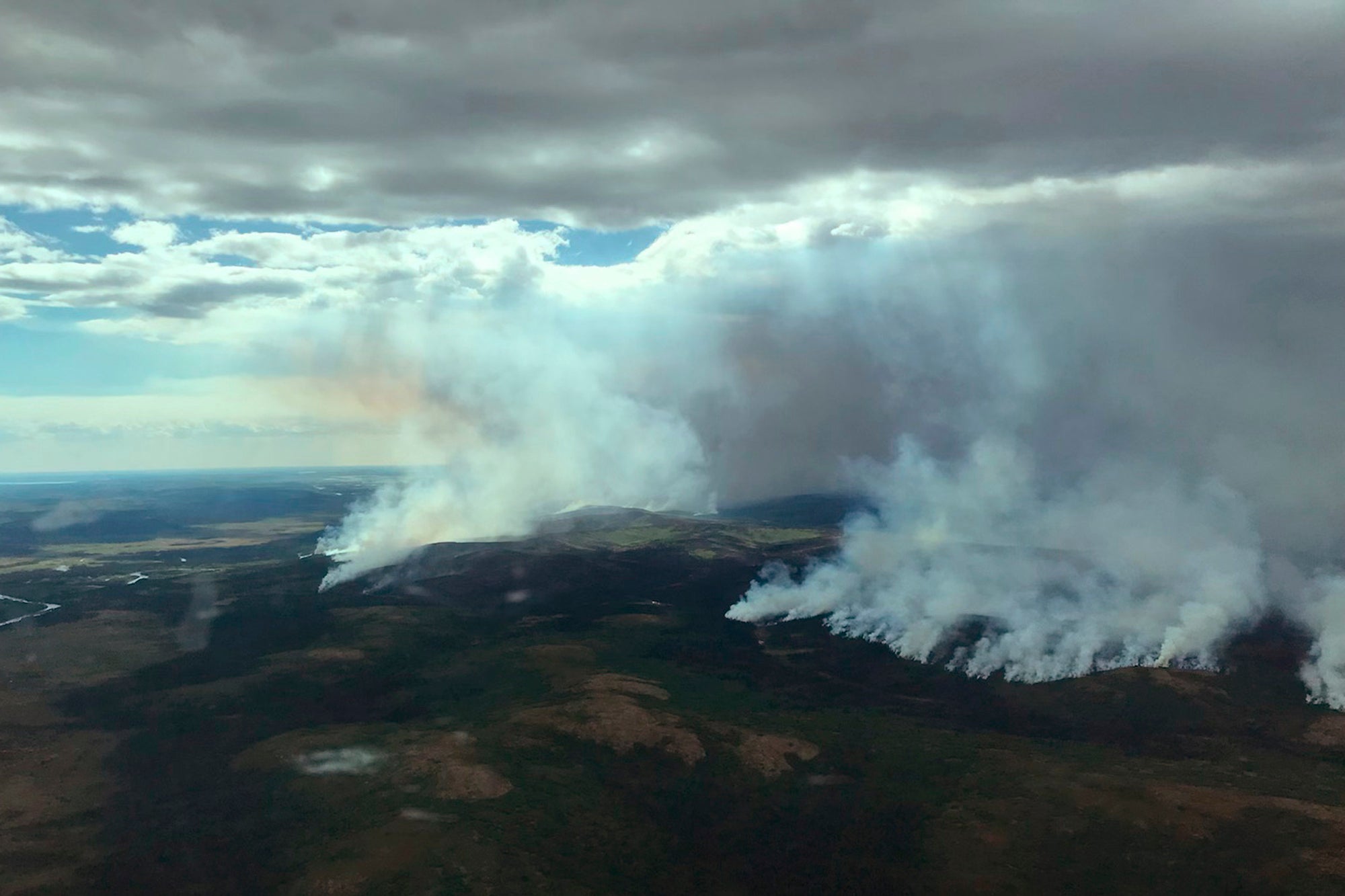Large tundra wildfire in southwest Alaska threatens villages
The largest documented wildfire burning through tundra in southwest Alaska is within miles of two Alaska Native villages

Your support helps us to tell the story
From reproductive rights to climate change to Big Tech, The Independent is on the ground when the story is developing. Whether it's investigating the financials of Elon Musk's pro-Trump PAC or producing our latest documentary, 'The A Word', which shines a light on the American women fighting for reproductive rights, we know how important it is to parse out the facts from the messaging.
At such a critical moment in US history, we need reporters on the ground. Your donation allows us to keep sending journalists to speak to both sides of the story.
The Independent is trusted by Americans across the entire political spectrum. And unlike many other quality news outlets, we choose not to lock Americans out of our reporting and analysis with paywalls. We believe quality journalism should be available to everyone, paid for by those who can afford it.
Your support makes all the difference.The largest documented wildfire burning through tundra in southwest Alaska was within miles of two Alaska Native villages, prompting officials Friday to urge residents to prepare for possible evacuation.
This came a day after dozens of elders and residents with health concerns voluntarily evacuated because of smoke from the nearby fire.
Officials on Friday put the communities of St. Mary’s and Pitkas Point into “ready” status, meaning residents should gather important items they would want to have with them if they have to evacuate, said U.S. Bureau of Land Management Alaska Fire Service spokesperson Beth Ipsen by text. That would be followed by “set,” or getting a go-bag ready and leaving if the “go” order is given.
The fire is consuming dry grass, alder and willow bushes on the largely treeless tundra as gusts of up to 30 mph (48.28 kph) are pushing the fire in the general direction of St. Mary’s and Pitkas Point, Yup’ik subsistence communities with a combined population of about 700 people and about 10 miles (16 kilometers) apart.
There are about 65 firefighters battling the blaze, with about 40 more expected later Friday, Ipsen earlier said by phone.
The fire had not grown much since Thursday and was still estimated at 78 squares miles (202 square kilometers). It had crept another mile closer to St. Mary’s in that time and was about 7 miles (11.27 kilometers) away on Friday.
Ipsen said she was not aware of any structures that have been lost.
Crews cleared brush and other fuel from a swath of land in the path of the flames, and air tankers dropped retardant between the line and St. Mary’s as another buffer. Other aircraft had been dropping water on the fire until another fire broke out north of a nearby community, Mountain Village.
Climate change has played a role in this historic fire, said Rick Thoman, a climate specialist with the University of Alaska Fairbanks’ International Arctic Research Center.
He said based on records from the Alaska Fire Service dating back to the 1940s, this is the largest documented wildfire in the lower Yukon River valley. There are much bigger fires recorded just 50 or 60 miles (97 kilometers) north of St. Mary’s, but those burned in boreal forests.
The area where the tundra fire is burning, the Yukon-Kuskokwim Delta, lost its snowpack early this year, leaving grass and other vegetation longer to dry out. Coupled with the warmest period on record in the region recently, it provided for the perfect storm for this fire that was started by lightning on May 31.
“Climate change didn’t cause the thunderstorm that sparked that fire, but it increased the likelihood that the ambient conditions would be receptive,” he said.
The southwest Alaska hub community of Bethel, about 100 miles (160.93 kilometers) southeast of St. Mary’s, is the closest long-term weather station.
For the period covering the last week of May and the first week of June, Bethel had its warmest temperatures on record this year, 9 degrees F (12.78 degrees C) above its normal 48 degrees F (8.89 degrees C), Thoman said.
About 80 village elders and others with health concerns were relocated to the Alaska National Guard Armory in Bethel on Thursday, said Jeremy Zidek, spokesperson for the Alaska Division of Homeland Security and Emergency Management.
Two companies that provide commuter air service in roadless western Alaska flew the passengers to Bethel.
One of those was Yute Commuter Services, which provided 12 flights out of St. Mary’s on its planes that seat six, said Andrew Flagg, the company’s station manager in Bethel.
On Friday, he said they were asked to deliver drinking water to the community so it could be given to the firefighters.
St. Mary’s and Pitkas Point, which is at the confluence of the Andreafsky and Yukon rivers, are located about 450 miles (724 kilometers) west of Anchorage.